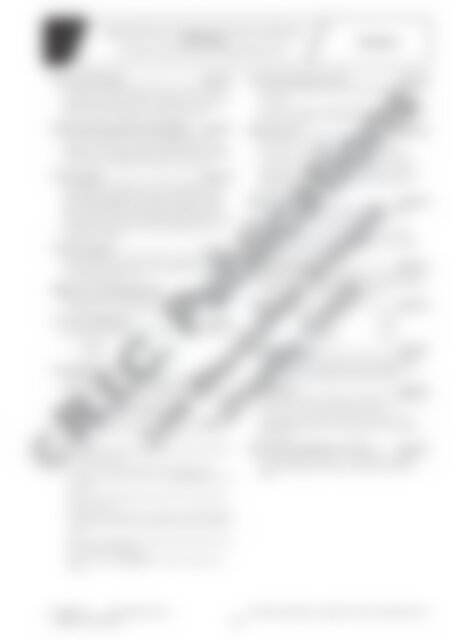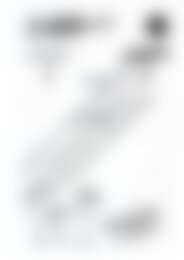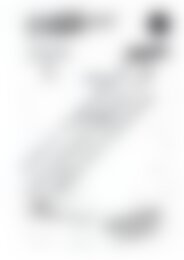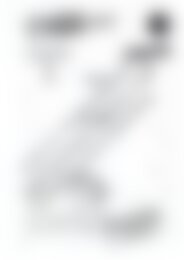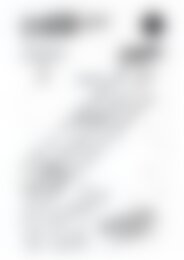20876 ACE Language (Yr 1) Simple Texts
Create successful ePaper yourself
Turn your PDF publications into a flip-book with our unique Google optimized e-Paper software.
Text structure<br />
and organisation<br />
Understand patterns of repetition and contrast in simple texts<br />
(<strong>ACE</strong>LA1448)<br />
© Australian Curriculum: Assessment and Reporting Authority 2012<br />
Answers<br />
Harris the helicopter .................................... page 30<br />
The students are asked to identify Harris’s name in the text, and if<br />
possible, the use of the pronoun ‘he’ referring to the main character.<br />
Students may identify by listening or underlining or circling the<br />
character’s name as it appears on a hard copy of the text.<br />
Eating, working, playing and sleeping ...... page 31<br />
In the text, the characters—I, Dad, my big brother, Mum—eat<br />
breakfast, work, play with some form of technology, and go to bed.<br />
In contrast, the pet goldfi sh do different things. The same repeated<br />
sentence structure is used for the characters in each section.<br />
Ten tiny tigers .............................................. page 32<br />
The repeated sounds (alliteration) include: ‘Ten, tiny tigers’, and<br />
‘Two, tiny tigers’, ‘tiny tigers’, ‘scary sound’, ‘scratching at some<br />
sticks’, ‘buzzing beehive’, ‘spied a seashell’, ‘fell fast’, and ‘then<br />
there’. The text is also an example of repeated sentence structure<br />
and repeated sounds (rhyme). The students could identify the sounds<br />
by listening or underlining or circling the repeated sounds on a<br />
photocopy of the page.<br />
The four dragons ......................................... page 33<br />
The rhyming words at the ends of the lines include: sea/free, Pearl/<br />
whirl, below/grow, help/self (near rhyme), plan/land, mouths/drought<br />
(near rhyme), done/won, sea/be.<br />
Magic trick—floating paperclip .................. page 34<br />
The repeated use of command verbs in the procedure include: Make,<br />
Fill, Open, Hold, Place, Lower (twice), Move, Watch.<br />
I’m a nut (traditional) .................................. page 35<br />
The chorus and tongue clicks/fi nger snaps are repeated. The chorus<br />
is: I’m a nut!<br />
I’m a nut!<br />
I’m a nut!<br />
The littlest worm (traditional) .................... page 36<br />
The fi rst three lines of the song are repeated as an echo/call<br />
and response, and thereafter each of the fi rst four lines of each<br />
subsequent verses is repeated as an echo/call and response.<br />
Why the whale spouts and the starfish<br />
looks ragged ................................................. page 37<br />
The sentences which include words indicating cause and effect are<br />
as follows:<br />
• They decided to travel there because the hunting was good and<br />
the weather was sunny.<br />
• It would be a hard journey so they needed a good canoe.<br />
• The other men planned to steal the canoe because Whale would<br />
not share.<br />
• Whale was very pleased so he moored his canoe in deep water<br />
and sat on a rock.<br />
• Starfi sh told funny stories and scratched hard on Whale’s head so<br />
he could not hear the others as they stole the canoe and rowed<br />
away.<br />
• He was very angry so he threw Starfi sh against the rocks until he<br />
was covered with jagged cuts.<br />
• Whale was very angry because his canoe was wrecked on the<br />
shore.<br />
At the pet shop/On the farm ....................... page 38<br />
At the pet shop—rabbits, white mice, kittens, puppies, guinea pigs,<br />
hermit crabs<br />
On the farm—rooster, hen, chickens, bull, cow, calves, stallion, mare,<br />
foal, boar, sow, piglets, ram, ewe, lambs (Farmer Smith)<br />
Word card sort – 1 ........................................ page 39<br />
Land transport—car, motorcycle, truck, bicycle, van<br />
Sea transport—yacht, jetski , submarine, canoe, speedboat<br />
Air transport—helicopter, aeroplane, hot air balloon, jet, glider<br />
Students may also fi nd other word group categories of their own<br />
including how different vehicles are powered or the number of<br />
wheels on land vehicles.<br />
Word card sort – 2 ........................................ page 40<br />
Games/Sports—soccer, cricket, basketball, tennis, swimming<br />
Sporting equipment—cap, shoes, glove, ball, bat<br />
People involved in sport—player, coach, referee, batter, bowler<br />
Students may also like to group words by the sport; for example,<br />
cricket, cap, glove, batter, bowler, bat.<br />
Whose home am I? ...................................... page 41<br />
Words and phrases as parts of a whole topic of a text include: walls,<br />
neighbourhood, roof, door, windows, fl oor, room, garden. Students<br />
may also suggest the words ‘adults’ and ‘children’.<br />
Animals move ............................................... page 42<br />
1. wriggle 2. fl y 3. swim<br />
4. climb 5. crawl 6. slide<br />
7. hop 8. waddle 9. jump<br />
The opposites story ..................................... page 43<br />
The opposites used to show contrast in the text include: little/big,<br />
old/young, light/heavy, loves/hates, light/heavy, sad/happy, over/<br />
under, empty/full, quickly/slowly, far/close and long/short.<br />
Hey little fly! ................................................ page 44<br />
Fly viewpoint/arguments: needed by many children, too small to be<br />
tasty, have uses—cleaning up garbage and messes<br />
Spider viewpoint/arguments: fl ies don’t have feelings, fl ies are<br />
annoying pests that get in your hair, bigger, fl ies are an important<br />
part of dinner.<br />
How the first butterflies were born ........... page 45<br />
Contrasting imagery in a poem—’… dark winter, a cold blanket<br />
covered the land/days grew brighter. Warm fi ngers stroked the<br />
world.’<br />
R.I.C. Publications ® www.ricpublications.com.au Australian Curriculum English – <strong>Language</strong>: Text structure and organisation (Year 1)<br />
ISBN 978-1-921750-84-7<br />
87


